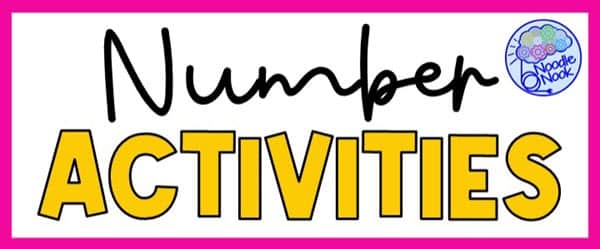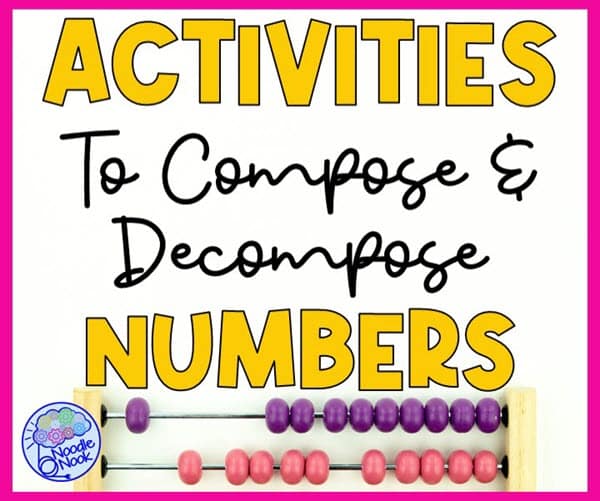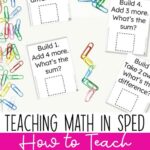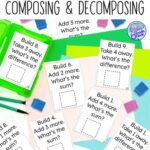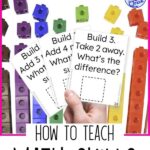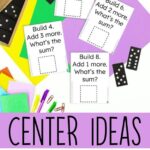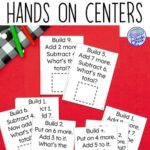During a teacher appreciation week, I found myself up early strolling through a big box store trying to find a perfectly practical yet thoughtful gift for my amazing teacher team. Excitement washed over me as I found the perfect insulated mugs. Only one problem. There were only three. I hunted down a store employee and asked them if they had any more in the back because I could only find three but I needed eight. To my surprise, the employee asked, “Well, how many more do you need then?” At that moment, rather caught off guard, I realized how important math fluency is in everyday situations. That’s why there’s immense value in incorporating activities for composing and decomposing numbers in your classroom.
Boost Math Fluency and Conceptual Understanding
What is Composing and Decomposing Numbers in Math?
Composing numbers involves the dynamic process of combining smaller numbers to create a larger one. For example, the number 10 can be actively composed by adding 6 + 4 or 3 + 7. On the other hand, decomposing numbers involves skillfully breaking down a given number into its smaller parts. To illustrate, the number 8 can be skillfully decomposed into 5 + 3 or 2 + 6.
These essential skills serve as the bedrock for developing a strong number sense, becoming fluent with mental math abilities, and establishing a solid foundation for tackling more complex mathematical operations.
Why is Composing and Decomposing Important?
In early elementary classes and special education settings, teaching composing and decomposing numbers is a crucial skill for developing math fluency and conceptual understanding. By breaking numbers down into their component parts (decomposing) and combining smaller numbers to form larger ones (composing), students gain a deeper grasp of number relationships and arithmetic operations.
Additionally, for students with significant disabilities, the importance of composing and decomposing numbers extends even further. It is a foundation for building number sense, which is essential for mathematical proficiency. By breaking down numbers into smaller parts, students develop a solid understanding of place value and the relationship between digits within a number. This understanding serves as a building block for more complex mathematical concepts, such as addition, subtraction, multiplication, and division.
Moreover, this type of math fluency can impact employability after graduation. After all, think of that store helper who didn’t know how many more mugs it took to make eight.
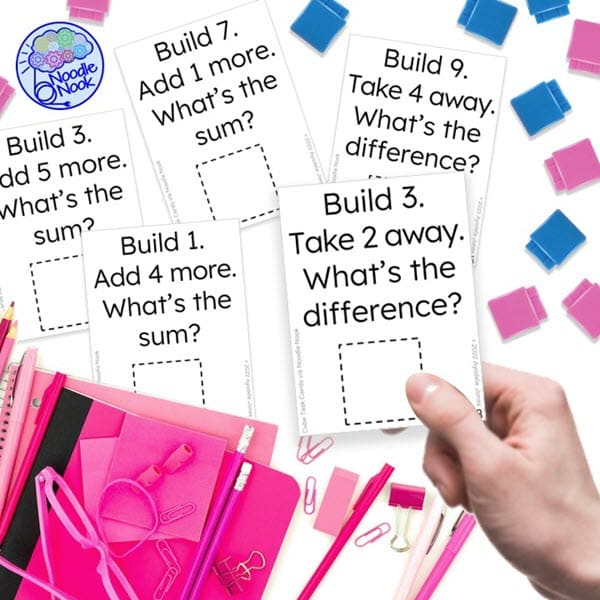
How to Teach Composing and Decomposing Numbers:
Teaching composing and decomposing numbers is an essential skill for students to develop a strong foundation in math. Here are some actionable steps and ideas for teachers to effectively teach composing and decomposing numbers:
- Start with Concrete Manipulatives: Begin by using hands-on manipulatives like linking cubes, snap cubes or base-10 blocks. Then give students a variety of ways to physically combine and separate the cubes to create and break apart numbers. For example, students can use Unifix cubes to compose the number 10 by combining groups of smaller numbers or decompose the number 8 by separating it into different parts.
- Use Visual Representations: Incorporate pictorial models to support students’ understanding of composing and decomposing numbers. Use number cards or frame mats to represent the decomposition and composition process visually. For instance, when decomposing teen numbers, show how 15 can be broken down into 10 and 5 using a number sentence or frame card.
- Integrate Word Problems: Present word problems that require students to compose or decompose numbers to find a solution. For example, provide a word problem where students need to determine how many more students are needed to make a whole group. Or how about how many mugs to make eight. The point here is to encourage students to represent the problem using representations, numbers and symbols. From there, they can create a number sentence.
- Engage in Whole Group Activities: Conduct interactive whole group activities to reinforce composing and decomposing numbers. Get up and get moving and make it interactive. Then, break into small groups.
- Break Out into Small Groups: After your large group activity, break into smaller groups to reinforce collaboration and interactions. Use game boards or partner games that encourage students to collaborate and apply their skills. For instance, play a game where students take turns composing and decomposing numbers to move along the game board.
- Create Centers for Independent Practice: Set up math centers where students can practice composing and decomposing numbers independently. Provide a variety of activities such as missing number tasks, flash cards, or hands-on games using paper clips and recording sheets. This allows students to engage in meaningful and independent practice.
Teaching Composing and Decomposing Numbers in Special Education:
When teaching composing and decomposing numbers in special education settings, it’s important to provide additional support and accommodations. Here are some strategies and ideas specifically tailored for special education:
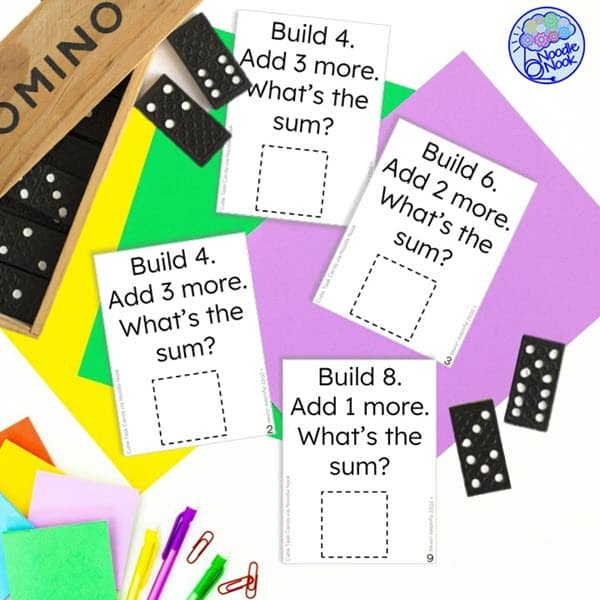
- Differentiate Instruction: Adapt activities and materials to meet the individual needs of students with special education requirements. Offer a range of difficulty levels and provide visual supports, such as visual cues or simplified instructions, to assist students in comprehending the concepts.
- Utilize Digital Versions: Incorporate digital resources, such as Google Slides or activity pages, to enhance engagement and accessibility. Digital versions can include interactive features, audio support, and visual aids, catering to different learning styles and abilities.
- Incorporate Hands-on Games: Create hands-on games that involve sensory experiences to support learning. For example, use tactile materials like playdough or sensory bins to represent and manipulate numbers. This provides a multisensory approach to help students grasp the concept of composing and decomposing numbers.
- Small Group Instruction: Conduct small group instruction to provide targeted support and address individual needs. Use manipulatives, pictorial models, and scaffolded questions to guide students through the composing and decomposing process. This allows for more focused instruction and personalized assistance.
- Include Quick Assessments: Regularly assess students’ understanding of composing and decomposing numbers through quick assessments. Use tools like recording pages or quick assessment activities to gauge their progress. This feedback helps identify areas of improvement and informs instructional decisions.
By implementing these strategies and activities, teachers can create an inclusive and supportive learning environment, ensuring that students with special education needs experience success and growth in composing and decomposing numbers.
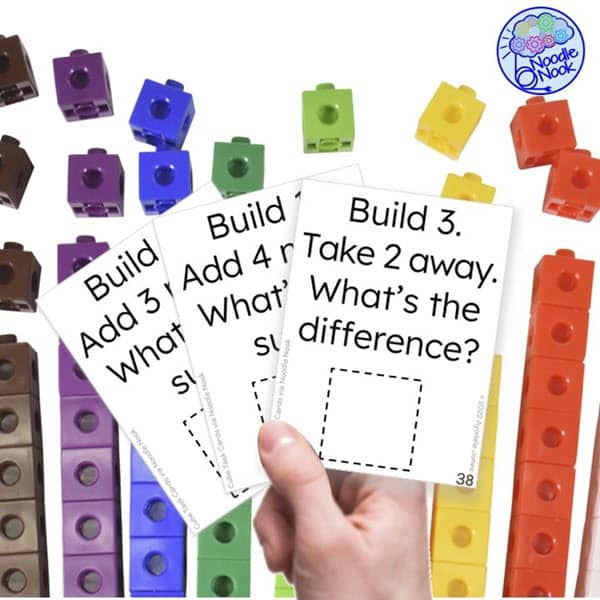
Centers that Teach Composing and Decomposing Numbers:
Math centers offer a variety of activities that engage students and provide hands-on practice with composing and decomposing numbers. Here are some center ideas that can enhance students’ understanding and fluency in composing and decomposing numbers:
- Number Sentence Sort: Create a center where students sort number cards into categories based on whether they represent a composed or decomposed number. Students can match number sentences to corresponding pictorial models or manipulatives, reinforcing the relationship between numbers and their components.
Try these Monster Math Digital Activities!
- Missing Part Puzzles: Develop puzzles or task cards where students must find the missing part of a composed or decomposed number. For example, provide a puzzle piece with “5 + ___ = 8” and challenge students to determine the missing number. This activity encourages critical thinking and problem-solving skills.
- Frame Mat Exploration: Set up a center with frame mats and digit cards to allow students to explore composing and decomposing numbers. Students can place digit cards on the frame mat to create different numbers and record their findings on a recording page. This activity strengthens number sense and understanding of place value.
- Partner Games: Design partner games that involve composing and decomposing numbers. For instance, create a game where students take turns rolling dice, composing a number using the rolled digits, and decomposing a target number provided by their partner. This promotes collaboration, communication, and fluency in number operations.
- Morning Tub Activity: Prepare a morning tub activity with snap cubes or base-10 blocks where students can independently compose and decompose numbers. Provide task cards or challenge cards with different numbers for students to explore and manipulate. This activity allows for hands-on exploration and builds fluency.
You MUST add these Unifix or Linking Cube Task Cards to your tubs!
- Math Journals: Incorporate math journals as a center activity where students can record their thinking and strategies for composing and decomposing numbers. Provide prompts or problem-solving scenarios that encourage students to explain their thought processes. This promotes reflection and deepens conceptual understanding.
- Digital Versions: Create digital versions of composing and decomposing activities using platforms like Google Classroom or interactive apps. Offer interactive activities where students can drag and drop manipulatives or input number sentences. This provides a flexible and engaging option for centers, especially for incorporating technology.
- Base-10 Block Exploration: Set up a center with base-10 blocks, and encourage students to explore composing and decomposing larger numbers. Students can use the blocks to represent three-digit numbers and break them down into their respective place values. This hands-on experience strengthens their understanding of larger numbers.
By incorporating a variety of activities and centers that cater to different learning styles and preferences, you’ll be ready to meet the diverse needs of students in your classroom. And centers provide opportunities for independent practice, collaboration, and exploration. We need this as part of improved fluency and conceptual understanding of composing and decomposing numbers.
Some More Ideas!
I know most of us have a box of paper clips in the classroom. More likely than not, we have a few. If you’re a new teacher or just new to this content, you may be needing some easy-to-prep activities for composing and decomposing numbers. Try these!
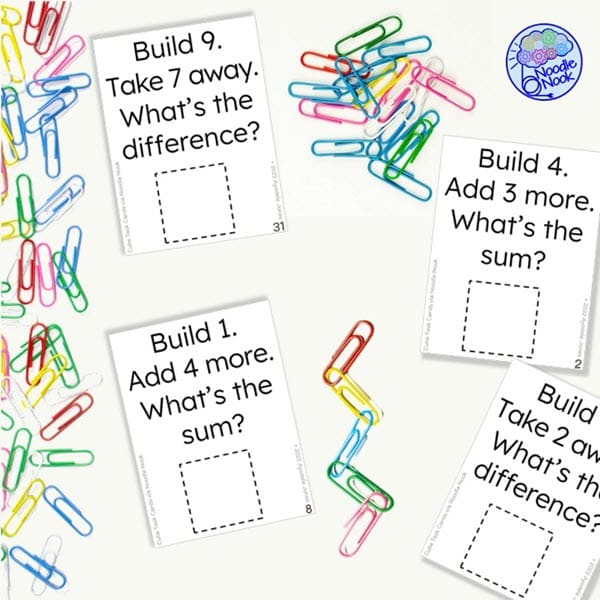
- Clip the Compose: Create sets of paper clips in different colors or lengths. Write down a target number on a piece of paper, and ask students to use the paper clips to compose that number. For example, if the target number is 8, students can use a combination of paper clips to make 8, such as 3 blue clips and 5 red clips. This activity helps students visualize and understand different ways to combine numbers to reach a given total.
- Clip the Decompose: Similar to the previous activity, provide students with a set of paper clips and a target number. This time, the goal is to decompose the number into its smaller parts. For example, if the target number is 10, students can find different combinations of paper clips that add up to 10, such as 7 yellow clips and 3 green clips or 4 red clips and 6 blue clips. This activity encourages students to think flexibly about number relationships and builds their understanding of number composition.
- Clip Patterns: Create pattern cards with a sequence of numbers, such as 2, 4, 6, 8. Ask students to use paper clips to represent each number in the pattern. They can choose different colors or lengths of paper clips to represent each number. This activity helps students recognize and extend patterns, reinforcing their understanding of number sequences and relationships.
- Clip the Missing Addend: Give students a set of paper clips and a number sentence with a missing addend, such as 5 + __ = 9. Students can use the paper clips to explore different ways to complete the number sentence. They can try different combinations of paper clips until they find the missing addend that makes the equation true. This activity strengthens students’ addition skills and encourages them to think critically about number relationships.
- Clip the Fact Families: Introduce students to fact families using paper clips. Provide them with a set of three numbers, such as 3, 5, and 8, and ask them to use paper clips to represent the numbers and their related addition and subtraction facts. For example, they can use 3 green clips, 5 red clips, and 8 blue clips to represent the fact family 3 + 5 = 8, 5 + 3 = 8, 8 – 3 = 5, and 8 – 5 = 3. This activity helps students see the connections between addition and subtraction and reinforces their understanding of fact families.
By incorporating these paper clip activities into your classroom, you can provide hands-on, engaging experiences for students to practice composing and decomposing numbers. If you don’t have access to colored paper clips, then try using large and small ones. Otherwise, a quick trip to the dollar store can score you some multicolored clips on the cheap. Incorporating these activities promote conceptual understanding, critical thinking, and mathematical fluency in a fun and interactive way.
RECAP: Activities for Composing and Decomposing Numbers
Targeting activities for composing and decomposing numbers into your classroom is a great way to prepare students for more complex math skills yet to come. Moreover, adding these types of activities into your morning work or classroom centers is so much fun. Getting a core of great activities, especially ones that are low prep and target whole number fluency, will lead to the most success for you and your students. So get on board with some of the best ways to lay a good foundation for future math success with these ideas and activities for composing and decomposing numbers.
Article Citation: [cite]
